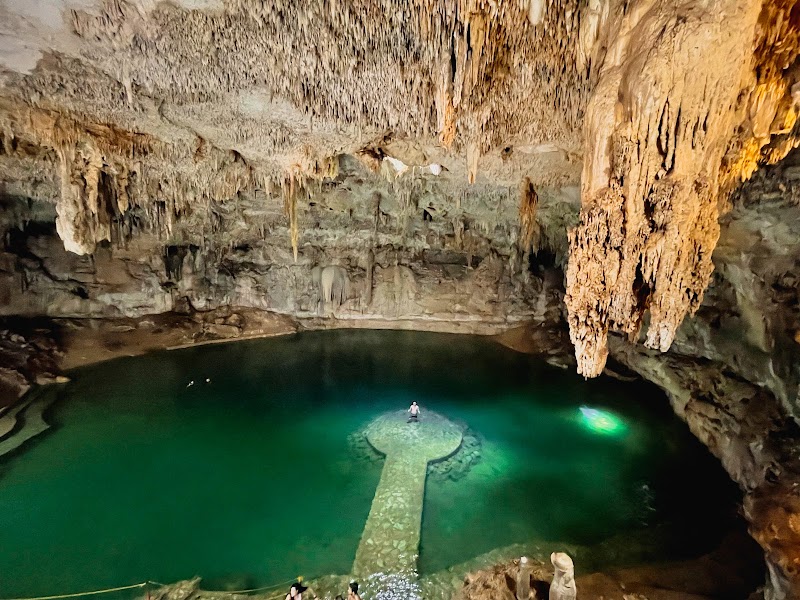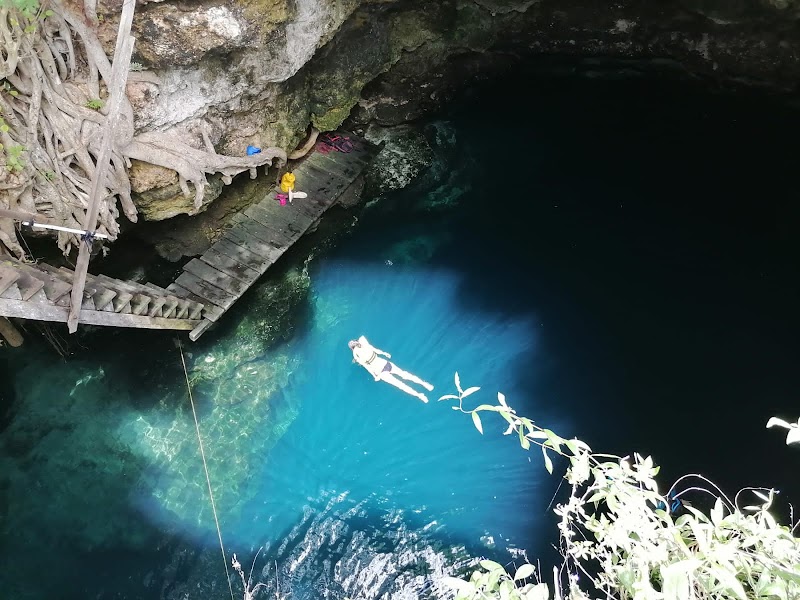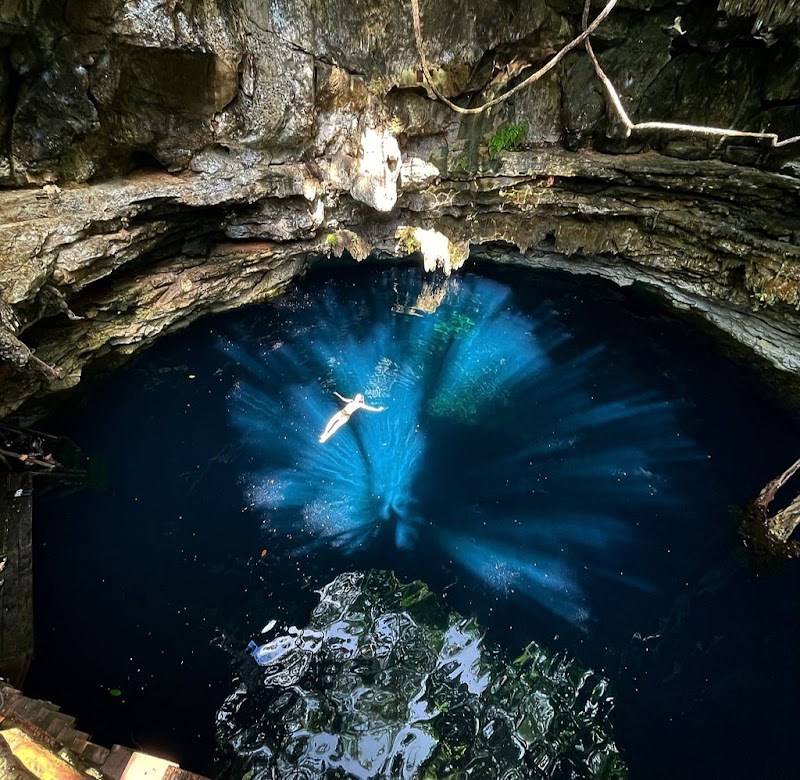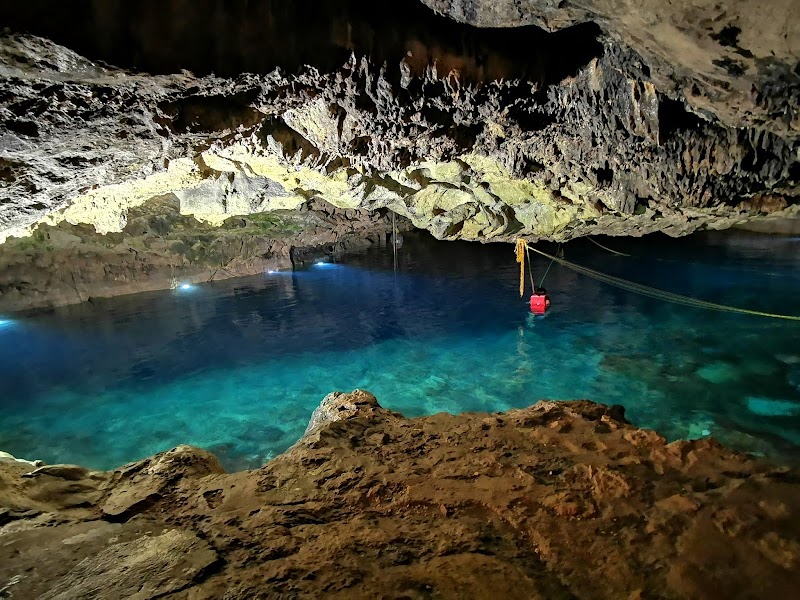Welcome to the Enchanting World of Yucatan Cenotes
With more than 6,000 cenotes strewn across the Yucatan Peninsula, this destination conceals a hidden world that's begging to be explored. The pristine, natural sinkholes, the beguiling Mayan ruins, such as the ones found in Chichen Itza and the vibrant culture are what make this region truly unique. Every visit to the Yucatan offers a distinct and memorable experience - a captivating journey into the core of nature and ancient civilizations.
Whether you're an adrenaline junkie or a history buff, our comprehensive tourist map will serve as your faithful guide. This isn't just a map, but a porthole to a realm of experiences, guiding you to the Yucatan Peninsula's concealed treasures. Allow it to be your compass as you navigate through this journey of discovery, helping you plot your course through the multitude of wonders that lie in wait.
" Booking.comRevealing the Spectacular Sights of Yucatan Cenotes
Uncovering Yucatan Cenotes is akin to discovering a treasure trove of natural marvels. Your exploratory journey commences with the awe-inspiring Cenote Ik Kil, followed by the fascinating Cenote Samula, the enchanting Cenote X'keken, the mesmerizing Cenote Zaci, and the breath-taking Cenote Suytun. Each of these cenotes showcases a unique spectacle that will leave you in absolute awe.
Diving Deep into Cenote Ik Kil
Dive into the deep blue waters of Cenote Ik Kil, a breathtaking natural sinkhole located near the ancient city of Chichen Itza. The sheer beauty of this cenote is enhanced by the dangling vines and natural skylight, casting a serene glow on the cenote's interior and creating a tranquil yet exhilarating atmosphere. This sight is a must-visit on your Mexican tourist map.
Exploring the Twin Jewels: Cenote Samula and Cenote X'keken
Next, make your way to the village of Dzitnup, home to the twin cenotes: Samula and X'keken. These cenotes are renowned for their striking stalactite formations and crystal-clear turquoise waters, which provide a refreshing escape from the tropical heat. These cenotes are unique due to their connection to local folklore, with tales of mythical creatures and ancient gods adding an intriguing layer to your visit.
The Urban Oasis: Cenote Zaci
Located in the heart of Valladolid city, Cenote Zaci is a one-of-a-kind urban oasis. This cenote offers a unique experience as you dive into its clear waters, encircled by the city's colonial architecture. With a rich history tracing back to Mayan times, Cenote Zaci is more than just a swimming spot; it's a testament to the area's vibrant past.
Stepping into a Dream at Cenote Suytun
Lastly, we arrive at Cenote Suytun, a hidden gem in the Yucatan Peninsula. The striking visual appeal is amplified by the single ray of sunlight that penetrates the darkness, illuminating the cenote's serene, crystal-clear waters. Visiting Cenote Suytun feels like stepping into a dream, where the interplay of light and shadow creates an ethereal spectacle.
Commencing a Journey of Discovery
Exploring the Yucatan cenotes is not just about sightseeing; it's about initiating a journey of discovery. From the awe-inspiring natural formations to the rich cultural and historical narratives that surround them, each cenote offers a unique glimpse into the region's vibrant past and present. So, pack your sense of adventure and get ready to delve into the captivating world of Yucatan cenotes!

Practical Information for Visiting Yucatan Cenotes
Transportation and Mobility
Travelling around the Yucatan Peninsula and reaching the various cenotes can be a seamless experience. The region boasts an extensive network of public buses, taxis, and colectivos (shared vans). You can catch a bus from the main cities like Cancun, Merida, or Playa del Carmen to Valladolid, which serves as a central hub for visiting many of the cenotes. For a more flexible and convenient option, consider hiring a car or a local tour operator.
Schedules and Prices
Cenotes in the Yucatan Peninsula generally open around 8 or 9 am and close between 5 and 7 pm, but exact times can vary depending on the specific cenote and the time of year. To dodge the crowds and enjoy a more tranquil experience, try to arrive early in the morning or later in the afternoon. The admission fees range from 100 to 350 Mexican Pesos (approximately 5 to 18 USD) depending on the popularity and facilities of the cenote. Always carry cash, as credit cards are not universally accepted.
Safety Tips
While cenotes are generally safe to explore, it's important to exercise caution and respect the natural environment. Avoid using sunscreens or lotions before swimming to protect the delicate water ecosystem. If you're not a confident swimmer, consider wearing a life jacket, which is often provided at the entrance. Also, keep an eye on weather forecasts as heavy rains can affect visibility and safety.
Practical Recommendations
When planning your cenote visit, remember to pack a towel, swimwear, and water shoes. Some cenotes might be quite chilly, so a light jacket could come in handy. It's also worth bringing a waterproof camera or phone case to capture the magical underwater scenes. Lastly, always leave the place as you found it, ensuring that these natural wonders continue to inspire future generations.

Frequently Asked Questions
1. Are there any cenotes suitable for children in the Yucatan Peninsula?
Indeed, several cenotes in the Yucatan Peninsula offer shallow areas perfect for children. Cenote Cristalino, for instance, has a small pool area where kids can safely enjoy the water. However, it's always crucial to maintain constant supervision, as cenotes can have deep sections as well.
2. Are there certain times of the year when it's best to visit Yucatan cenotes?
The Yucatan cenotes can be visited year-round, but the optimal time depends on what you're looking for. If you aim to avoid crowds, visiting during the shoulder seasons (April to June and September to November) can be a good idea. These periods also tend to offer more comfortable weather conditions.
3. Can I dive in the Yucatan cenotes if I'm not a certified diver?
Most cenotes in the Yucatan Peninsula allow snorkeling, but for scuba diving, it's generally required to have a certification. Some cenotes, like Cacahuamilpa Caves, offer discovery scuba diving courses, enabling beginners to experience diving under professional supervision.
4. Is it recommended to wear any specific clothing or footwear when visiting the cenotes?
Given the natural setting of cenotes, it's advisable to wear comfortable clothing and water shoes or sandals with good grip. As for swimming, it's recommended to use biodegradable sunscreen and avoid wearing jewelry to protect the cenote's delicate ecosystems.
5. Can I visit multiple cenotes in one day?
Yes, it's quite feasible to visit several cenotes in a single day, especially if they are located close to each other. For instance, Cenote X'keken and Cenote Samula are only about a five-minute walk apart. However, remember to factor in travel time and potential waiting times during peak hours.
6. Are there any cenotes that are less crowded or off the beaten path?
While the most famous cenotes can get busy, there are several lesser-known cenotes that offer a more serene experience. Cenotes like X-Batun and Dzibilchaltun, while slightly more remote, provide an opportunity to enjoy the natural beauty of the Yucatan cenotes away from the crowds.


